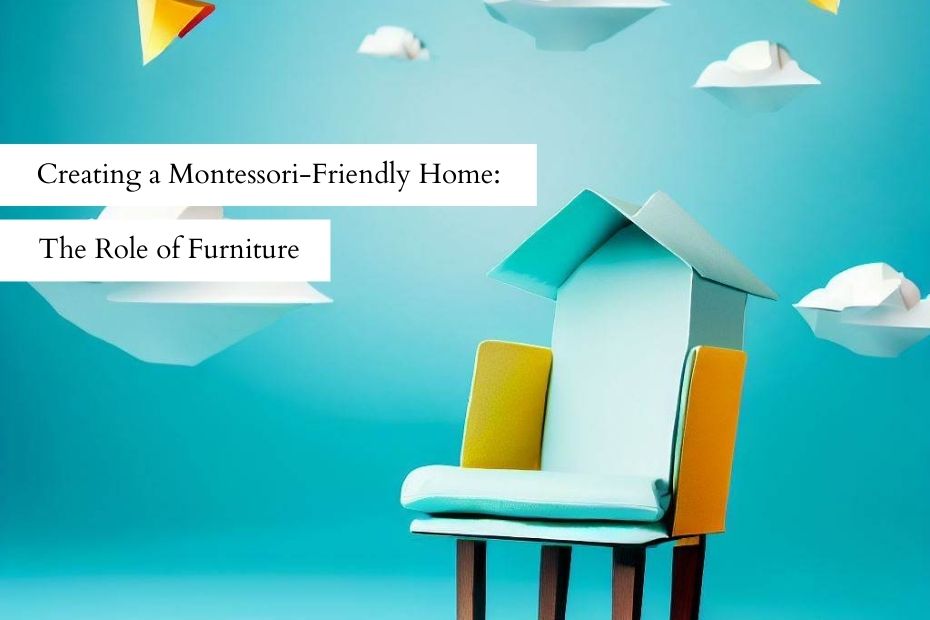Hey Montessori!
Have you ever wondered how to create a Montessori-friendly home? The secret lies not just in the activities and teaching methods you use, but also in the environment you create.
And a key part of that environment is the furniture.
Let’s explore how furniture plays a pivotal role in creating a Montessori-friendly home that fosters independence and a love for learning in your child.
Understanding Montessori Furniture
Montessori furniture is unique in its design and purpose.
It’s not just about aesthetics or durability, but about supporting your child’s development and learning. Montessori furniture is designed to be child-sized, simple, and made from natural materials.
This means that the furniture is scaled down to a size that is manageable for children, allowing them to use it independently.
The simplicity of the design reduces distractions, helping children to focus on their activities.
The use of natural materials, such as wood, provides a variety of textures and colors for the child to explore, stimulating their senses and promoting a connection with nature.
Moreover, Montessori furniture is designed to promote independence.
By being accessible and easy to use, children can access, use, and tidy up their materials without adult assistance.
This fosters a sense of ownership, responsibility, and self-confidence in children.
It also encourages them to take an active role in their learning and daily routines, which is a key aspect of the Montessori philosophy.
The Role of Furniture in a Montessori-Friendly Home
Furniture in a Montessori-friendly home is more than just a physical necessity.
It’s a tool for independence and self-directed learning.
By providing furniture that is the right size and design for children, we empower them to do things for themselves.
This could be as simple as a child being able to sit at their own table and chair to draw, or a toddler being able to reach their own coat hook to hang up their coat.
These may seem like small tasks, but they are significant milestones in a child’s journey towards independence.
Furniture also plays a crucial role in promoting order and organization, which are key principles in Montessori education.
Each item in a Montessori environment has its place, and children learn to return items where they belong.
This fosters a sense of order and respect for their environment. It also helps children to develop their problem-solving skills as they figure out where items belong.
Lastly, the furniture in a Montessori-friendly home respects the child’s size and perspective.
Low shelves, child-sized tables and chairs, and accessible storage solutions are all part of this.
By providing furniture that is scaled to the child’s size, we are acknowledging and respecting their needs and capabilities.
Key Elements of Montessori Furniture
When selecting Montessori furniture, there are a few key elements to consider:
Child-sized: Furniture should be the right size for your child. This allows them to use it independently, promoting self-confidence and autonomy.
Simplicity: Montessori furniture is often simple and uncluttered. This helps children focus on their activities without distraction.
Natural Materials: Montessori philosophy emphasizes the use of natural materials. Wooden furniture, for example, is not only durable and eco-friendly, but also provides a variety of textures and colors for the child to explore.
Safety: Safety is paramount. Montessori furniture should be sturdy, with rounded corners and non-toxic finishes.
Creating a Montessori-Friendly Space at Home
Creating a Montessori-friendly space at home involves careful selection and arrangement of furniture. Here are some tips:
Living Area: Use low shelves to display a few carefully chosen activities or toys. This not only makes the items accessible to the child, but also encourages them to take responsibility for tidying up after themselves.
Include a child-sized table and chairs for work and play. This provides a dedicated space for your child to engage in activities, and also reinforces the idea of having a specific place for specific tasks.
Child’s Bedroom: Choose a low bed to allow your child to get in and out independently. This promotes autonomy and also ensures safety.
Use low shelves or drawers for clothing, and encourage your child to choose their own outfits. This not only fosters independence, but also allows your child to express their individuality.
Kitchen: Consider a learning tower to allow your child to safely participate in kitchen activities. This gives them a sense of involvement and can also be a great way to introduce practical life skills.
Provide a low table and chair for meals. This encourages your child to eat independently and also promotes good posture.
Parting Thoughts
The right furniture can transform your home into a Montessori-friendly environment that supports your child’s independence and love for learning.
It’s not about buying the most expensive items, but about choosing furniture that respects your child’s size, promotes independence, and fosters a sense of order and responsibility.
So, start your journey today and witness the transformative impact of Montessori furniture on your child’s learning and development.
Remember, every small step counts in this beautiful journey of raising independent and confident learners.
